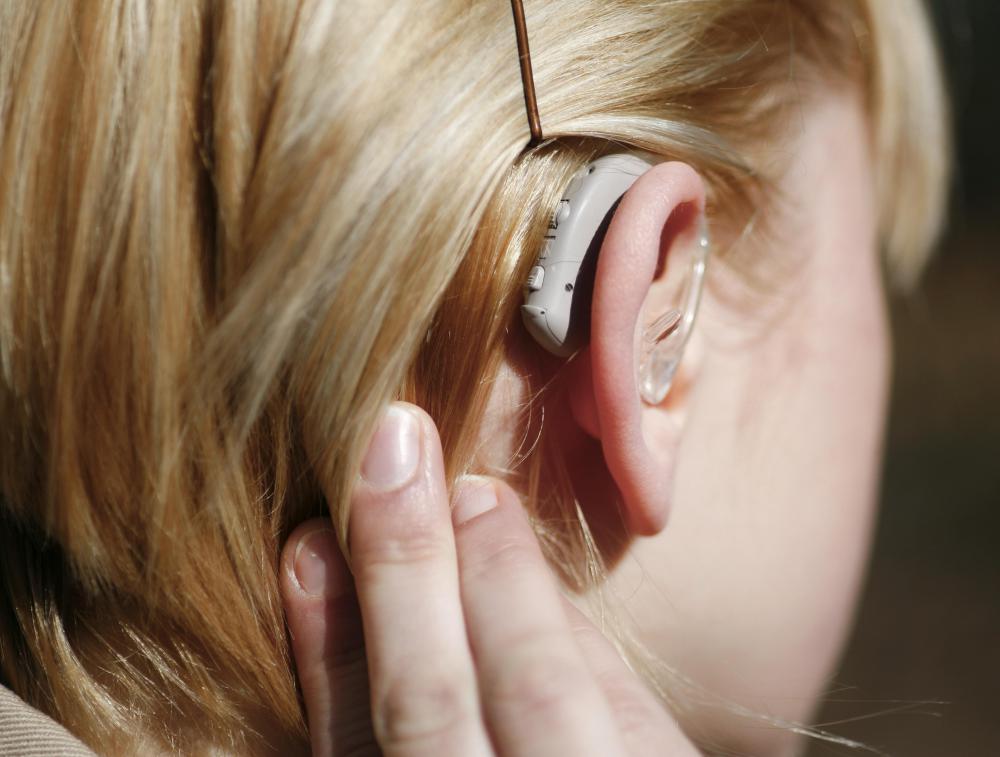At WiseGEEK, we're committed to delivering accurate, trustworthy information. Our expert-authored content is rigorously fact-checked and sourced from credible authorities. Discover how we uphold the highest standards in providing you with reliable knowledge.
What is Otosclerosis?
Otosclerosis refers to the irregular growth of the stapes bone in the inner ear, which can lead to hearing problems or complete hearing loss. A bone that grows large enough can disrupt sound waves, affecting the way the ear recognizes and processes sounds. Otosclerosis usually begins to present problems in childhood or adolescence, and tends to worsen over time. In most cases, hearing problems can be alleviated with medications and custom hearing aids. Surgery is sometimes necessary to remove the abnormal bone and replace it with a prosthetic device.
Doctors and medical researchers are unsure of the exact causes of otosclerosis. It is thought that the condition might occur because of a random genetic mutation that affects the growth of the stapes bone, also called the stirrup. Otosclerosis appears to be heritable; an individual is more likely to suffer form the disorder of one or both parents have hearing problems. There is not enough reliable research to suggest that a particular group or gender is more susceptible to otosclerosis.

As the stapes grows to an abnormally large size, it affects the ear's ability to recognize sound vibrations and translate them into recognizable signals in the brain. Most people first notice that they are unable to hear low-pitched noises, and hearing problems progress over time to the point of near deafness. An individual may also suffer from tinnitus, a constant ringing or buzzing sensation. While it is possible for otosclerosis to affect only one ear, most people with the condition suffer from hearing problems in both ears.

Doctors typically diagnose the condition by administering hearing tests and taking computerized tomography (CT) scans of the ears. CT scans are specialized x-rays that create a visual image of the inner ear. The doctor uses the results of CT scans and hearing tests to determine the extent of hearing loss and rule out other potential causes of ear problems. If findings reveal an abnormal stapes, the physician can decide on the most appropriate treatment measures.
Some patients find relief from hearing problems by taking prescription bone health supplements, including calcium and vitamin D. Custom hearing aids can be used to amplify sounds, though they cannot prevent the progression of hearing loss. A doctor might recommend surgery to remove part or all of the abnormal stapes, and replace it with a prosthetic device. In a procedure known as a stapedectomy, the surgeon cuts away damaged tissue and removes the bone. An artificial plastic device is inserted in place of the bone to take over its function.
AS FEATURED ON:
AS FEATURED ON:












Discuss this Article
Post your comments